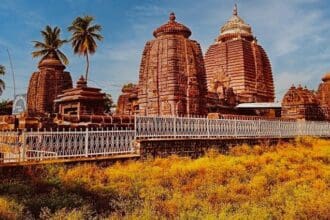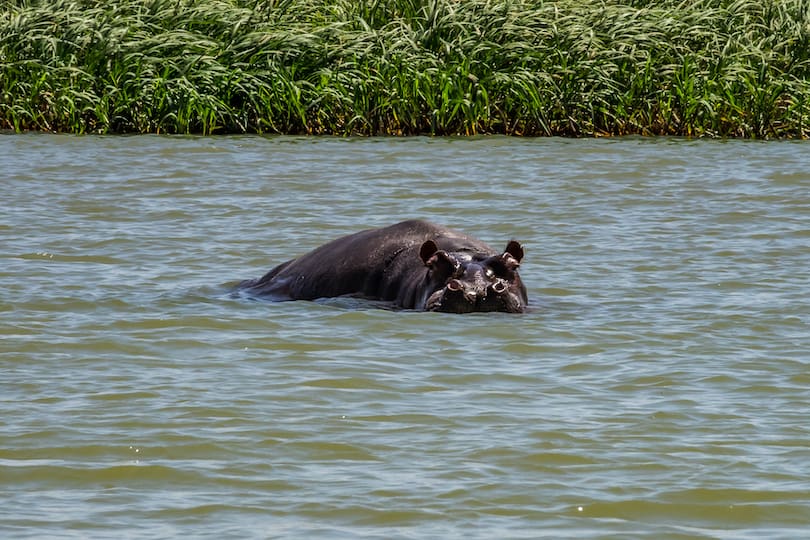Nestled in the southeastern part of Telangana , the Kinnerasani Wildlife Sanctuary is a hidden gem for nature enthusiasts and wildlife lovers. Spanning an expansive area of approximately 635 square kilometers, this sanctuary offers a unique blend of lush forests, serene water bodies, and diverse wildlife. Surrounded by the majestic Eastern Ghats, it provides a pristine habitat for numerous species of flora and fauna. Whether you’re seeking adventure, tranquility, or a deeper connection with nature, the Kinnerasani Wildlife Sanctuary promises an unforgettable experience.
In this comprehensive guide, we will explore every aspect of the sanctuary, from its geography and biodiversity to travel tips, conservation efforts, and nearby attractions. This guide is designed to serve as your ultimate resource for planning a visit to this remarkable destination.
Geography and Location of Kinnerasani Wildlife Sanctuary
Location
The Kinnerasani Wildlife Sanctuary is located in the Bhadradri Kothagudem district of Telangana , approximately 200 kilometers east of Hyderabad. It lies along the banks of the Kinnerasani River , which flows through the sanctuary and serves as a lifeline for its ecosystem. The sanctuary is bordered by dense deciduous forests and rolling hills, creating a picturesque landscape that attracts visitors year-round.
Topography
The sanctuary’s terrain is characterized by undulating hills, plateaus, and riverine plains. The elevation ranges from 100 to 500 meters above sea level, providing diverse habitats for various species. The Kinnerasani Reservoir , a man-made lake within the sanctuary, adds to its charm and supports aquatic life, migratory birds, and local communities.
The varied topography creates distinct microclimates within the sanctuary. For instance, the lower altitudes near the reservoir are home to aquatic plants and animals, while the higher elevations support dense forests and grasslands. These variations make the sanctuary a haven for biodiversity.
Climate
The climate of the Kinnerasani Wildlife Sanctuary is tropical, with distinct wet and dry seasons. Summers (March to June) are hot, with temperatures reaching up to 40°C, while winters (November to February) are mild and pleasant. The monsoon season (July to October) brings moderate rainfall, rejuvenating the forests and filling the reservoir.
During the monsoon, the sanctuary transforms into a lush green paradise, with streams cascading down the hills and the forest floor teeming with life. Winter, on the other hand, is ideal for wildlife sightings, as animals gather near water sources due to the scarcity of water in the drier regions.
“The Kinnerasani Wildlife Sanctuary is a microcosm of Telangana’s natural beauty, where rivers, forests, and wildlife coexist harmoniously.”
Flora and Fauna of Kinnerasani Wildlife Sanctuary
Diverse Plant Life
The sanctuary is predominantly covered by dry deciduous forests , interspersed with patches of scrubland and grasslands. Common tree species include teak , tendu , neem , and bamboo , which provide shelter and food for wildlife. During the monsoon, the forest floor bursts into life with vibrant wildflowers and medicinal plants.
The teak trees dominate the canopy, offering shade and protection to smaller plants and animals. Tendu leaves , used in making traditional Indian cigarettes (bidis), are harvested sustainably by local communities under regulated practices. Bamboo groves serve as vital habitats for small mammals and birds, while also playing a crucial role in preventing soil erosion.
Iconic Wildlife Species
The Kinnerasani Wildlife Sanctuary is home to a rich variety of mammals, birds, reptiles, and amphibians. Some of the most notable species include:
- Indian Tiger : As part of Project Tiger, the sanctuary plays a crucial role in conserving this majestic predator. Tigers are elusive but can occasionally be spotted during early morning safaris.
- Indian Leopard : Often spotted prowling the dense undergrowth, the leopard is another apex predator in the region. Their stealth and agility make them fascinating to observe.
- Sloth Bear : Known for their distinctive shaggy fur and long claws, sloth bears are commonly found here. They feed primarily on termites and honey, using their specialized snouts to dig into termite mounds.
- Sambar Deer : These large deer are a primary prey species for predators like tigers and leopards. They are often seen grazing near water bodies or in open grasslands.
- Chital (Spotted Deer) : With their striking white spots, chitals are among the most visible herbivores in the sanctuary. They thrive in the sanctuary’s grasslands and are frequently observed in herds.
- Wild Boar : Often seen foraging in groups, wild boars are abundant throughout the sanctuary. Their rooting behavior helps aerate the soil, promoting plant growth.
- Mugger Crocodile : The Kinnerasani Reservoir provides an ideal habitat for these freshwater crocodiles. They bask on the banks during sunny days and hunt fish and small mammals at night.
Avian Diversity
Birdwatchers will be delighted by the sanctuary’s avian diversity. Over 200 species of birds have been recorded, including both resident and migratory species. Highlights include:
- Painted Stork : Known for their vibrant plumage, these storks are often seen near water bodies, wading through shallow waters in search of fish.
- Indian Peafowl : The national bird of India, peacocks can be spotted displaying their magnificent tail feathers, especially during the breeding season.
- Eagles and Vultures : Birds of prey like the crested serpent eagle and white-rumped vulture soar above the canopy, scanning the ground for prey or carrion.
- Kingfishers : The sanctuary’s rivers and reservoirs attract several species of kingfishers, including the pied kingfisher and common kingfisher , which dive into the water to catch fish.
Reptiles and Amphibians
The sanctuary is also home to a variety of reptiles and amphibians, such as:
- Indian Python : A non-venomous snake often found basking near water sources. Pythons play a critical role in controlling rodent populations.
- Monitor Lizard : These large lizards are adept swimmers and climbers. They feed on eggs, small mammals, and insects.
- Frogs and Toads : Various species thrive in the moist undergrowth during the monsoon, contributing to the sanctuary’s ecological balance.
Conservation Efforts and Challenges
Threats to Biodiversity
Despite its protected status, the Kinnerasani Wildlife Sanctuary faces several threats:
- Poaching : Illegal hunting remains a significant concern, particularly for large mammals like tigers and leopards. Poachers target these animals for their pelts, bones, and other body parts, which fetch high prices on the black market.
- Deforestation : Encroachment and illegal logging degrade the habitat, affecting both flora and fauna. Trees are often cut down for timber or cleared for agriculture, leading to habitat fragmentation.
- Human-Wildlife Conflict : Growing human settlements near the sanctuary lead to conflicts over resources. Farmers often retaliate against animals like elephants and wild boars that raid crops.
- Climate Change : Rising temperatures and erratic rainfall patterns disrupt the delicate balance of the ecosystem, affecting water availability and vegetation growth.
Conservation Initiatives
To address these challenges, the government and NGOs have implemented several measures:
- Anti-Poaching Patrols : Rangers conduct regular patrols to deter poachers and protect endangered species. Surveillance cameras and drones are increasingly being used to monitor remote areas.
- Community Involvement : Local communities are engaged in conservation programs, promoting sustainable livelihoods. For example, eco-tourism initiatives provide alternative income sources, reducing dependence on forest resources.
- Afforestation Drives : Tree plantation campaigns aim to restore degraded areas and enhance biodiversity. Native species are prioritized to ensure compatibility with the existing ecosystem.
- Awareness Campaigns : Educational programs raise awareness about the importance of wildlife conservation. Schools, colleges, and local organizations participate in workshops and seminars.
Role of Eco-Tourism
Eco-tourism has emerged as a powerful tool for conservation. By generating revenue and creating jobs, it incentivizes local communities to protect the sanctuary. Visitors are encouraged to follow responsible tourism practices, minimizing their impact on the environment. Homestays operated by local families allow tourists to immerse themselves in rural life while contributing directly to the community.
Best Time to Visit Kinnerasani Wildlife Sanctuary
The best time to visit the Kinnerasani Wildlife Sanctuary is from October to March , when the weather is cool and pleasant. During this period, wildlife sightings are more frequent, as animals gather near water sources. The post-monsoon months (September to November) are particularly rewarding, as the landscape is lush and vibrant.
Winter mornings are ideal for safaris, as animals are most active during this time. Birdwatchers should plan their visits between November and February, when migratory birds arrive in large numbers.
How to Reach Kinnerasani Wildlife Sanctuary
By Air
The nearest airport is Rajiv Gandhi International Airport in Hyderabad, located approximately 200 kilometers away. From there, you can hire a taxi or take a bus to reach the sanctuary. The drive takes around 4-5 hours, depending on traffic conditions.
By Train
The closest railway station is Khammam Railway Station , about 70 kilometers from the sanctuary. Regular trains connect Khammam to major cities like Hyderabad, Vijayawada, and Chennai. From the station, taxis and buses are available to transport visitors to the sanctuary.
By Road
The sanctuary is well-connected by road, with buses and taxis available from nearby towns like Khammam and Bhadrachalam. Private vehicles are also permitted, but visitors must adhere to designated routes. The roads leading to the sanctuary are generally in good condition, though some stretches may require caution during the monsoon.
Entry Permits
Entry permits can be obtained at the sanctuary’s entrance or online through the official Forest Department website. It’s advisable to book in advance, especially during peak tourist seasons. Foreign nationals may need to apply for special permits, so check requirements beforehand.
Activities and Attractions Within the Sanctuary
Jeep Safaris
Embark on thrilling jeep safaris to explore the sanctuary’s core zones. Accompanied by experienced guides, you’ll have the chance to spot tigers, leopards, and other elusive species. Safaris typically last 3-4 hours and cover key areas like the tiger reserve and grasslands.
Boat Rides on Kinnerasani Reservoir
Enjoy a peaceful boat ride on the reservoir, surrounded by lush greenery and flocks of migratory birds. It’s an excellent opportunity for photography and relaxation. The calm waters reflect the surrounding hills, creating a serene atmosphere.
Trekking Trails
For adventure seekers, the sanctuary offers several trekking trails that wind through the forests and hills. Popular routes include the Kinnerasani River Trail and Hilltop Viewpoint Trek . These trails provide breathtaking views of the sanctuary and opportunities to observe wildlife up close.
Birdwatching
With its rich avian diversity, the sanctuary is a paradise for birdwatchers. Early mornings and late afternoons are the best times to observe birds in their natural habitat. Bring binoculars and a field guide to identify different species.
Photography Opportunities
From panoramic landscapes to close-up shots of wildlife, the sanctuary offers endless opportunities for photographers to capture stunning images. Sunrise and sunset are particularly magical, casting golden hues over the forests and reservoir.
Travel Tips for Visiting Kinnerasani Wildlife Sanctuary
- Plan Ahead : Research the sanctuary’s rules and regulations before your visit. Familiarize yourself with entry timings, safari schedules, and prohibited activities.
- Pack Essentials : Carry binoculars, sunscreen, insect repellent, and comfortable walking shoes. A hat and sunglasses are also recommended to shield against the sun.
- Stay Hydrated : Bring plenty of water, especially during summer months. Dehydration can occur quickly in the heat.
- Respect Wildlife : Maintain a safe distance from animals and avoid feeding them. Remember that you are a guest in their home.
- Minimize Waste : Dispose of trash responsibly and avoid single-use plastics. Leave no trace behind to preserve the sanctuary’s pristine condition.
- Book Safaris Early : Safari slots fill up quickly, especially during weekends and holidays. Reserve your spot in advance to avoid disappointment.
- Follow Guidelines : Adhere to instructions provided by guides and rangers. Do not venture off marked trails or disturb the environment.
Other Tourist Attractions Near Kinnerasani Wildlife Sanctuary
- Bhadrachalam Temple : A famous Hindu temple dedicated to Lord Rama, located about 80 kilometers from the sanctuary. Pilgrims flock here to seek blessings and admire the intricate architecture.
- Papikonda National Park : Another wildlife haven in Andhra Pradesh, known for its scenic beauty and biodiversity. It’s a great extension for those interested in exploring more of the region’s natural treasures.
- Khammam Fort : A historical fort offering panoramic views of the surrounding countryside. Built during the Kakatiya dynasty, it houses ancient temples and relics.
- Sathupalli Village : Known for its tribal culture and handicrafts, it’s a great place to experience rural life. Visitors can interact with locals and purchase handmade souvenirs.
Conclusion
The Kinnerasani Wildlife Sanctuary is a testament to the beauty and resilience of nature. Its diverse ecosystems, thriving wildlife, and tranquil ambiance make it a must-visit destination for anyone exploring Telangana. By supporting conservation efforts and practicing responsible tourism, we can ensure that this sanctuary continues to inspire future generations.
Whether you’re a wildlife enthusiast, a photographer, or simply someone looking to reconnect with nature, the Kinnerasani Wildlife Sanctuary offers something for everyone. Plan your visit today and immerse yourself in the wonders of this incredible sanctuary.
Frequently Asked Questions (FAQs)
- What is the best time to visit Kinnerasani Wildlife Sanctuary?
- The best time is from October to March when the weather is cool and wildlife sightings are frequent.
- Do I need a permit to enter the sanctuary?
- Yes, entry permits are required and can be obtained at the entrance or online.
- Is it safe to visit the sanctuary alone?
- While solo visits are possible, hiring a guide is recommended for safety and navigation.
- Can I see tigers in the sanctuary?
- Yes, though sightings are rare and require patience and luck.
- Are there accommodations inside the sanctuary?
- Basic guesthouses and forest lodges are available, but luxury options are limited.
- What should I pack for a trip to Kinnerasani?
- Binoculars, camera, sunscreen, insect repellent, and comfortable clothing are essentials.
- How long does it take to reach Kinnerasani from Hyderabad?
- Approximately 4-5 hours by road, depending on traffic conditions.
- Are there medical facilities nearby?
- Limited facilities exist; carry a personal first-aid kit.
- What activities can I do in the sanctuary?
- Jeep safaris, boat rides, trekking, birdwatching, and photography are popular.
- Is Kinnerasani suitable for families with children?
- Yes, but plan carefully to accommodate younger travelers’ needs.















I really appreciate this post. I?¦ve been looking all over for this! Thank goodness I found it on Bing. You’ve made my day! Thx again
Whats up very nice website!! Guy .. Beautiful .. Amazing .. I’ll bookmark your website and take the feeds also…I am satisfied to search out a lot of helpful information here in the publish, we want develop extra techniques on this regard, thank you for sharing. . . . . .
This really answered my problem, thank you!